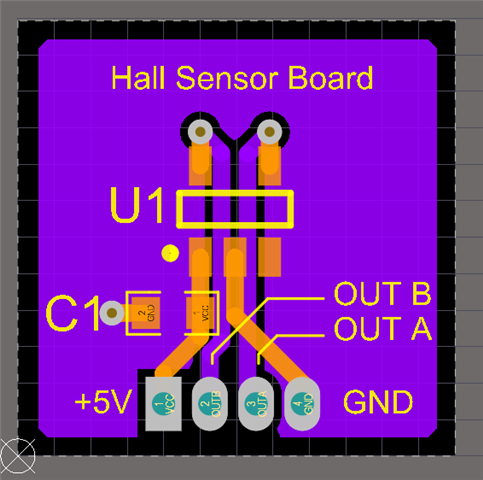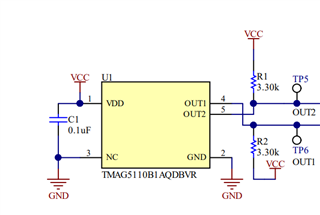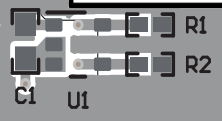No output from TMAG5110B2AQDBVRQ1.
i am trying to evaluate TMAG5110B2AQDBVRQ1 for one of the application.
below image shows the schematic of the ckt



(NC and GND Pin shorted on board)
there is a 4 pin wire harness that connect this PCB to host controller.
i am not seeing any pulses at output.
Magnet is able to generate more than 5mT field. Max RPM is 200.
i am able to see pulses on A and B outputs if i use different hall sensor (ATS605LSG)
orientation of sensor is in ZX direction





